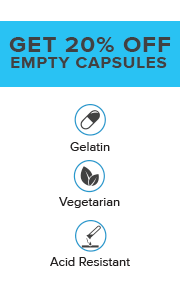| FREE TRIAL FORMULATIONS MY ACCOUNT | |
 | |
| Our Compounding Knowledge, Your Peace of Mind | |
| October 4, 2019 | Volume 16 | Issue 40 | |
| |||||
| |||||
|
At the recent Quality Compounding Summit, one of my first slides stated the following:
Let’s add one more: Pharmacy compounding of nuclear pharmaceuticals is even more regulated!!!!! Despite being one of the most regulated professions in the world, we constantly hear or read the media making untrue statements that “Pharmacy is an unregulated profession and needs more federal oversight�! Their lack of knowledge and the misinformation they broadcast is unfair and casts a shadow on an honorable and proud profession that provides great services for the public. Over the next few weeks, we will look at the following regulations governing and affecting our practice:
Yes, we are “very� regulated in what we do to serve the public. Maybe it’s time to place a few regulations regarding the truth on the media! “Freedom of the Press� does not give them license to lie and spread their ignorance. Maybe it should be changed to and limited to “Freedom of the Press for the Truth.� It seems that the media is the unregulated group here in our society.
| |||||
|
Announcement - Updated IJPC.com Website Visit the updated and easier-to-use IJPC.com website. The following list provides some of the available documents at this website:
| |||||
|
News NABP Receives FDA Funding to Develop Data-Sharing System for Improved Oversight of Compounding Pharmacies
Visit nabp.pharmacy to learn more.
THC Products May Play a Role in Outbreak of Lung Injury Associated with E-cigarette Use, or Vaping
As of September 24, 2019, 805 confirmed and probable cases of lung injury associated with e-cigarette product use, or vaping, have been reported to CDC by 46 states and the U.S. Virgin Islands. Those cases included 12 deaths in 10 states. More than two-thirds of patients are male; median age of cases is 23 years and about 62% of patients aged 18-34 years.
Vaping Illnesses Top 1,000, CDC Reports (Just in today)
Pathology of Vaping-Associated Lung Injury
| |||||
|
Did You Know ... …that George Washington said the following? “It is better to offer no excuse than a bad one.� | |||||
|
Tip of the Week A very successful college football team has the following above the door where they exit to go onto the playing field. “No Excuses.� Most pharmacists practice our profession honorably and very seriously as we know what can happen if a mistake is made. If one thinks about it, we can harm more people in a day than many can in years. This is why it is regulated with oversight to protect our patients and our personnel. | |||||
|
IJPC Now on Facebook and Youtube Become a fan of the IJPC Facebook page and share ideas, photos, and keep up to date with the latest compounding information - https://www.facebook.com/IJPCompounding View our growing collection of educational and training videos at www.ijpc.com/video or by subscribing to our Youtube channel at https://www.youtube.com/IJPCompounding. | |||||
|
Looking Back 1880 A.D.
|
| Copyright 2019 International Journal of Pharmaceutical Compounding, Inc. 122 N Bryant Ave, Edmond OK 73034 |
Manage my Email: Subscribe / Un-Subscribe |
Comments or Questions: info@compoundingtoday.com |
|
| Reprints & Permissions: Reprints@ijpc.com | |||



